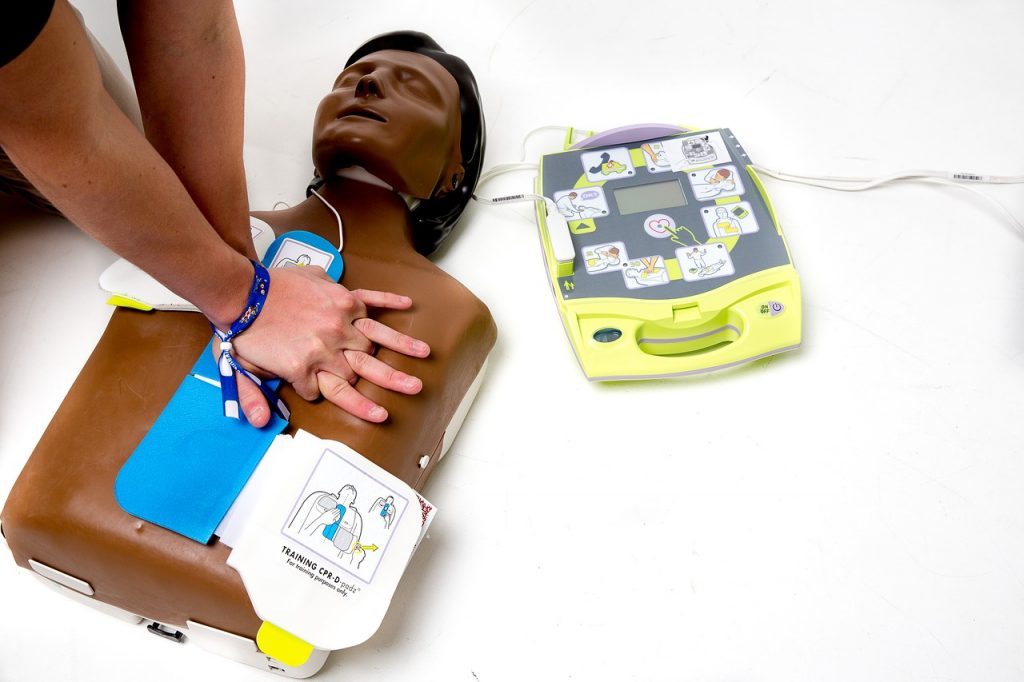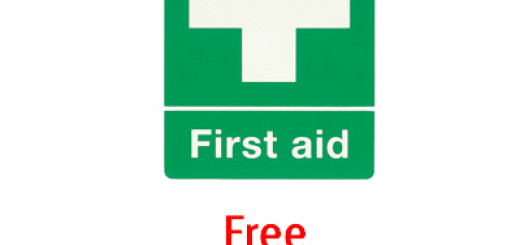What does AED stand for?
An AED is an Automated External Defibrillator. An AED is a medical device used to help victims of sudden cardiac arrest (SCA) who are collapsed and not breathing. The AED analyzes the heart’s rhythm and, if necessary, delivers an electrical shock, known as defibrillation.
Recent implementation of state public access defibrillation (PAD) laws and the Food and Drug Administration’s approval of “home use” AEDs have made AEDs available to rescuers in many places, including the following:
- Airports and aeroplanes
- Stadiums
- Gyms & health clubs
- Golf courses
- Schools & colleges
- Government buildings
- Offices
- Homes
How does an AED work?
The heart has four hollow chambers, two on the right that receive blood from the body and send it to the lungs for oxygen, and two on the left side that receive freshly oxygenated blood from the lungs and send it throughout the body.
The upper right chamber of the heart has specialized pacemaker cells that control the rate at which the heart beats. If the coronary arteries surrounding the heart become diseased (atherosclerosis) either sufficient oxygen cannot get to the pacemaker cells or sufficient blood cannot get to the heart muscle resulting in a heart attack.
A heart attack can lead to a sudden cardiac arrest where the heart stops beating in a normal rhythm. The pacemaker cells are disrupted and the heart muscle stops working effectively.
The electrical shock from an AED can, in effect, ‘reset’ the heart muscle and give the heart a chance to regain its normal rhythm and start beating again.
While many different models of AED exist, they all have the following elements in common:
- Power on/off mechanism
- Cable and pads (electrodes
- Analysis capability
- Defibrillation capability
- Prompts to guide you
- Battery operation for portability
How to use an AED
- Do not use an AED on a child under 1 year of age.
- Perform CPR until the AED is available.
- If the victim’s chest is wet or moist, dry it with a towel.
- Remove the backing from the pads and apply them to the victim’s bare chest
according to the diagram on the pads. For a child, use child pads if available. - Attach the cable to the AED.
- Stand clear and let the device analyze the heart rhythm.
- Deliver a shock if indicated.
- Perform CPR for a further 2 minutes
- Check the victim and repeat the steps above if needed. The AED will guide you through this with audible instructions.
- Continue providing care until EMS personnel arrive.
Do not use an AED near water. Move the victim to a dry location. Remove any medicated adhesive patches, such as nicotine, birth control, nitroglycerin or pain medication, from the victim before using the AED. Avoid placing the pads directly over a pacemaker.






